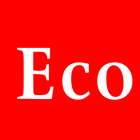
2016-1112 | The Economist-081
介绍: Space exploration: Dusting yourself down
Sharp, jagged dust grains get everywhere and break things
From The Economist 20161112
Audio:
0:00
“PICKING up some dust.” So said Buzz Aldrin on July 20th 1969, as he and Neil Armstrong descended towards the lunar surface. It is not the most famous quote from...
介绍: Space exploration: Dusting yourself down
Sharp, jagged dust grains get everywhere and break things
From The Economist 20161112
Audio:
0:00
“PICKING up some dust.” So said Buzz Aldrin on July 20th 1969, as he and Neil Armstrong descended towards the lunar surface. It is not the most famous quote from that day. But the lunar dust kicked up by Aldrin’s and Armstrong’s descending spacecraft would go on to become a serious, if under-appreciated, problem for all of the Apollo astronauts.
Lunar dust consists of rock pulverised to the consistency of talcum powder by micrometeoroid impacts. The fragments are sharp, and because there is no weather on the Moon, and therefore no erosion, they stay that way. At the same time, the solar wind bombards the dust with charged particles from the sun, giving it a static charge that makes it cling to anything it touches.
The jagged dust fragments blackened spacesuits, causing them to absorb too much heat. They tore tiny leaks in joint seals, resulting in pressure leaks and risking total failure of the suits. They scratched visors, hindering visibility, and caked batteries, making them overheat. Tramped back into the spacecraft, they escaped into the air, from where the astronauts had little choice but to breathe them in and risk any potential health consequences.
Half a century later NASA is pondering a return to the Moon, as a stepping stone for missions to Mars and the asteroids. At the same time a growing number of private firms have ambitions to mine precious metals from those celestial bodies, too. One of the (many) problems that NASA and the space-prospecting crowd will have to solve is what to do about the dust. Fortunately for them Kavya Manyapu, an engineer at Boeing who has been working with scientists from NASA’s Glenn Research Centre, may have a solution.
Ms Manyapu has come up with a new kind of spacesuit material that neutralises the dust in two different ways, one passive and one active. The passive strategy is a novel polymer-based coating that is applied to the top of an ordinary fabric spacesuit. It is impregnated with tiny dust-like particles of its own, which makes it harder for the real thing to stick.
To get rid of any dust that does nevertheless manage to accumulate, the material also has embedded within it a yarn made of conducting carbon-nanotube fibres. Connect those to a power source, and the fabric can create an electric field that repels the charged dust particles. In tests, the two systems managed to repel about 90% of the simulated lunar dust that the material was exposed to.
That would be a useful trick for future lunar explorers. But as is traditional for technology developed for use in space, Boeing is keen on terrestrial applications, too. The firm reckons its dust-repellent fabric could find uses in medicine or clean-room manufacturing. But until it has patented the idea, the company is not going into specifics.
Copyright © 2015-2016 Share2China.com | Powered by Flask and MongoDB
